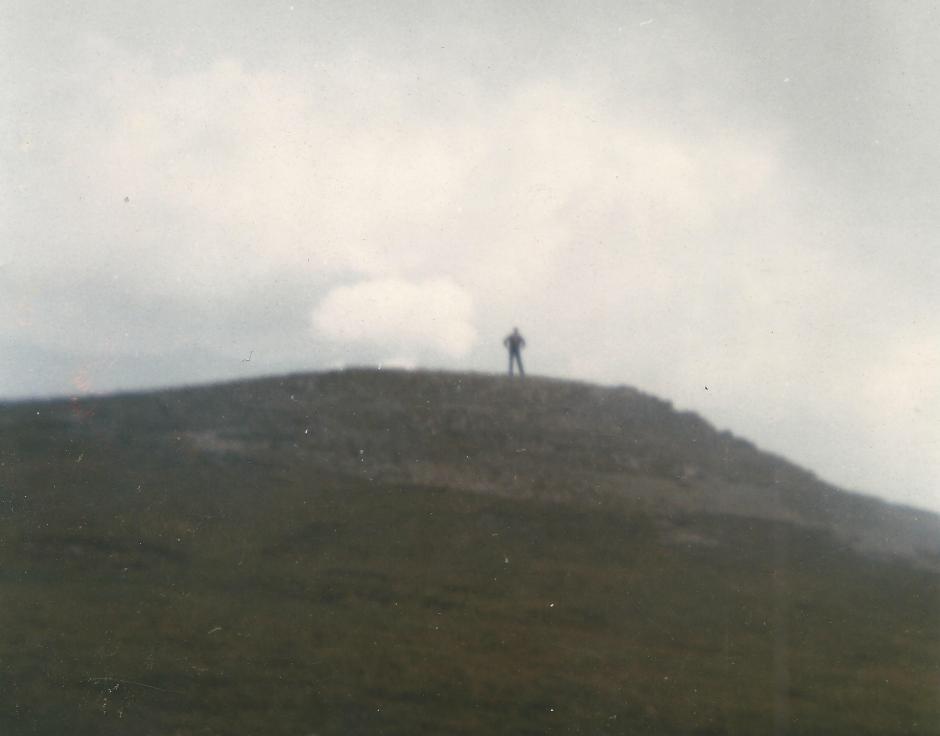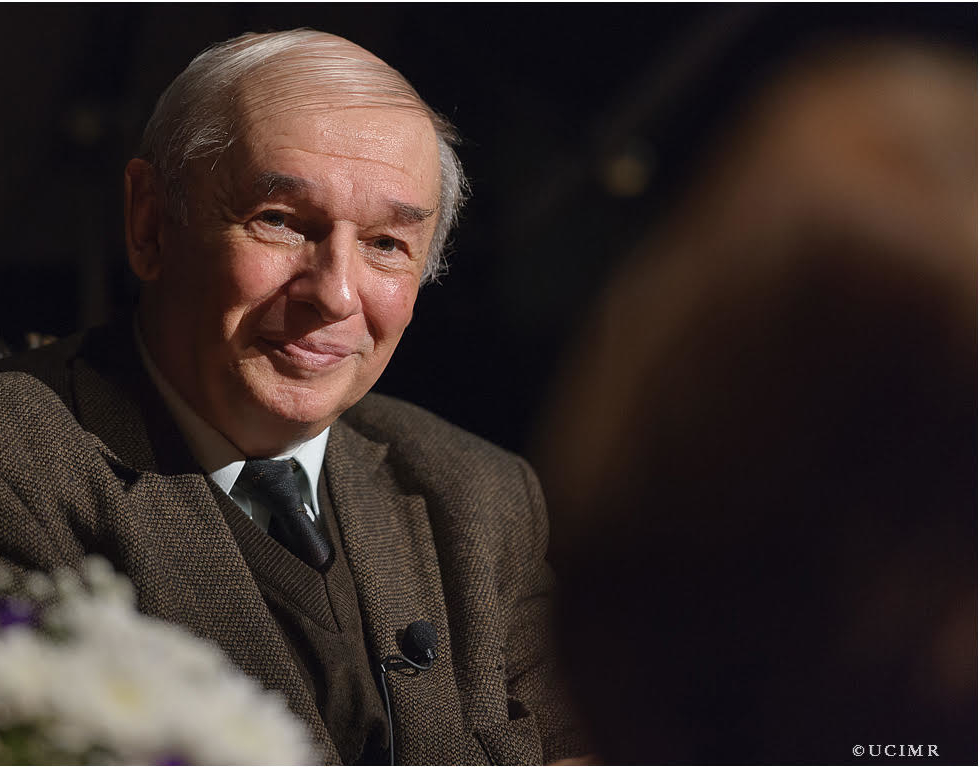Octavian Nemescu 1940–2020
November 2020

Octavian Nemecsu. Photo by Cristian Nemescu
Julian Cowley pays tribute to the Romanian avant garde composer
Octavian Nemescu, who died on 6 November 2020 aged 80, was an adventurous composer who believed that music’s mission is to awaken the human spirit. Born into a world at war, he grew up in Romania under a communist regime which viewed innovation in the arts and such expressions of spiritual aspiration with open hostility. In later life, Nemescu was able to speak frankly of the stifling impact of the historical situation in which he found himself, confronted frequently with ideological constraints and overt state censorship. Yet he found ways not only to survive as an academic, but also to sustain the creative integrity that enabled him to flourish as an artist.
Between 1956 and 1963, Nemescu attended the Universitatea Națională de Muzică in Bucharest, studying composition, harmony and orchestration. Those years happened to coincide with a particularly repressive period, a hardline reaction by Romanian authorities to recent social unrest in Hungary and Czechoslovakia. Free thinkers were routinely expelled from the university. In 1990, Nemescu would himself become a professor at that institution. The teaching he had received as a young musician was rigorous, yet generally conservative. Folk tradition was endorsed as an appropriate source for music with popular appeal. Nemescu’s own interests lay elsewhere, in the emergence of an international avant garde.
Along with likeminded students he sought out books and magazines that provided tantalising glimpses of new possibilities and expanding horizons in the arts. “For the exams we were making a certain type of music, just to pass the exam, and for ourselves we were making something different,” he later acknowledged. It was a situation he would face in later years too; there were times when a new composition was destined to be locked away in a drawer. Yet during his final semester a dramatic shift in the official position was announced. Young musicians were actually encouraged to follow their own preferences. That phase of cultural liberalisation lasted until 1972. Then, power passed to Nicolae Ceaușescu, and artistic freedom once again became severely delimited, with blocked passports frustrating attempts to attend festivals abroad.
As a student in 1960, Nemescu wrote madrigals. In 1962, he completed a sonata for clarinet and piano. The rest of that decade witnessed a radical shift in his outlook. He continued to compose orchestral, chamber and choral works, but also embraced new technology which enabled him to integrate prerecorded tape with instrumental music. He explored conceptual approaches to composition and conceived multimedia performances that involved dancers and film projection. Entering into the spirit of the time he called for concert halls to be torn down and for music to be restored to the natural world, to be experienced beside lakes or in forests.
Involvement with environmental music was part of a broader position that aligned Nemescu with Romania’s nascent spectralist movement. Along with Horațiu Rădulescu, Ana-Maria Avram, Iancu Dumitrescu and Corneliu Cezar he became a pivotal, transformative figure. The parameters of music were being rethought. Timbre, density, colour, intensity and texture took on fresh significance as spectral composition probed the inner life of sound. Electronic technology encouraged such investigation, but the natural world was also a source of insight and revelation. Rădulescu spoke of spectral composition as a quest for a music that is older than music, delving back beyond inherited melodic, rhythmic or harmonic conventions in search of fundamental acoustic properties.
This field of inquiry chimed perfectly with Nemescu’s deep interest in archetypes (inspired by Plato) and in the conduct of rituals, magic and shamanic ceremonies. Acutely aware of a dimension missing from the materialistic and stringently regulated society that framed his daily life he sought to retrieve what had been lost. Spectralism turned its back on serialism, yet it too is an aspect of the modernist project, new art drawing inspiration from the distant past.
“What is most modern in our time frequently turns out to be the most archaic,” essayist Guy Davenport noted, alluding to artists such as Picasso, Stravinsky, Joyce and Hilda Doolittle (HD). He added that the work of Romanian sculptor Constantin Brâncuși belongs to the art of the Cyclades in the ninth century BC. Nemescu himself readily acknowledged Brâncuși as a significant precursor: “Brâncuși’s sculpted heads, the flying birds, did not use any concrete symbols. It is the essence of all bird flights. The essence of a human head, beyond any gender or race. Let's also follow this direction in music and discover which are these archetypal essences.”
Gradeatia – Natural, reissued in 2018 by Sub Rosa, was the first album devoted entirely to electronic music to be released in Romania. It initially appeared on Electrecord, then the country’s only record label, in 1984. An earlier electroacoustic composition, Concentric for orchestra and tape (1969), had been banned by Romanian authorities. In such circumstances it was only by posting reel-to-reel tapes abroad, at considerable personal risk, that Nemescu managed to reach an international audience. In 1980 and 1982 he was rewarded with prestigious prizes at the Bourges International Electroacoustic Music Competition in France. Electrecord were emboldened, although that original release was truncated without Nemescu’s consent.
An electronic studio had actually been set up at Bucharest’s music university in 1967. Nemescu, not regarding it as a suitable place to experiment, preferred simply to record source material there, from which he would create electroacoustic collages using his own tape machine at home. Natural, developed in that way in 1973 and revised ten years later, was conceived as music for sunrise on a mountain top. The front covers of the original release and the reissue feature a photograph of a Möbius spiral set beside a large pond. Taken in 1965, it documents one aspect of a series of environmental collaborations between Nemescu and visual artist Wanda Mihuleac. A still more important creative partner across the years was Nemescu’s wife Erica, a skilled sound engineer who worked for the state owned animation studio, Animafilm.
Gradeatia was recorded during an extended visit the couple made to a studio in Belgium, a rare trip abroad secured largely due to the influence of Erica’s employers. Her knowledge of modular synthesis was crucial to the making of this piece which combines synthesized sounds with recordings of wind, animals and birds. The rear cover features a photograph of the composer, taken by his son Cristian. Indicatively, it is not a close-up. Nemescu was not temperamentally inclined to self-promotion. Instead he is seen from a distance, standing upon the crown of a hill, a representative figure. It’s an image that matches the underlying aspiration of his electroacoustic music, crafted in the studio but projected through his imagination into the wider world.
In 2006, personal tragedy struck when Cristian Nemescu, by then a young film director, was killed in a car crash. In 2014, initiating his cycle Music Of A Fatal Hour, conceived to be performed in a pyramid with seven floors, Octavian Nemescu wrote in a program note: “Sometimes, individual or collective lives are stricken by unpredictable, fatal events like: the death of a loved one, an illness, a disaster war or a natural catastrophe, a conflict (sometimes with loved ones), etc. To pass over this happening you must ‘look from above’, from beyond, climbing step by step, floor by floor till the last Tower of Detachment.”

Octavian Nemescu. Photo by Mihai Benea
Comments
Great article!
Thank you!
A very informative article - thanks, Other Romanian contemporaries of Nemescu have much that is worth exploring, and luckily it is available online
hxc8084
Thank you, well documented article in honor of this modest yet very special person.
History tends to forget those who don't want to shine in the spotlight and Octavian was a person like this.
He exited the scene in such a silence that most press in Romania didn't even found it important to mention it.
His music is his legacy but also his amazing humanistic view.
Leave a comment